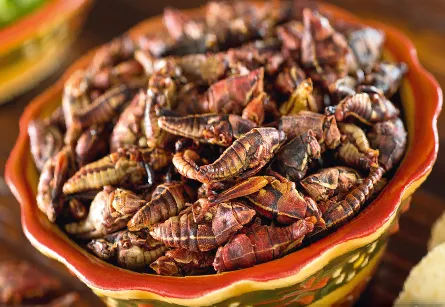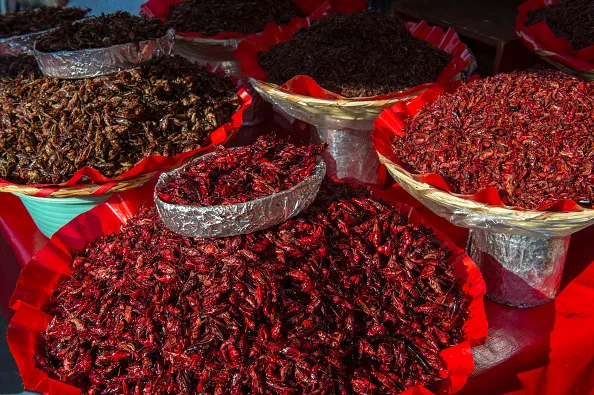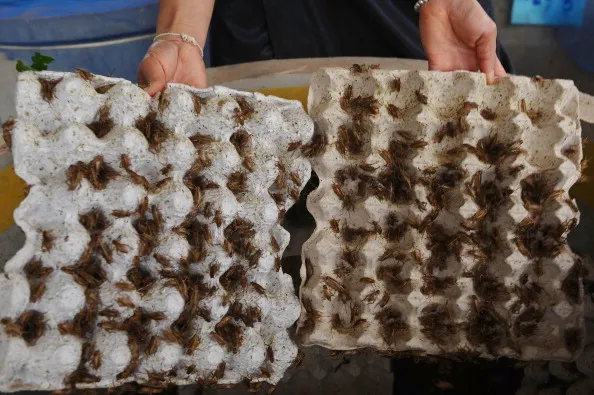Food lovers, be warned: now is not the time to be squeamish, because meals made from insects are coming to a plate near you.
It’s been well documented that the world’s population will hit nine billion by the year 2050. Which means a vast number of extra mouths to feed, a massive increase in the demand for meat, and enormous pressure on our existing land and food resources. So the search is on to find new types of protein to feed us and our animals. That’s where the farming of insects for food could provide the answer. Soon, Sunday lunch might be crickets, grasshoppers, caterpillars or termites.

It’s an idea that’s been considered by experts for some time. Four years ago the new Life Sciences building at Bristol University officially opened, and the great broadcaster and naturalist Sir David Attenborough was the guest of honour. On his tour, he saw labs for studying ant and bee behaviour, an acoustic chamber for bat research and an eco-friendly vertical garden. But for many of the staff and students that day, the highlight was seeing Sir David bite into the food of the future; a cookie made of mealworms. Afterwards, he declared that it was “delicious” and when asked if people in the UK would really get a taste for bugs and worms, his reply was simple: “We might have to if we want to eat.”

The crunch point
As Sir David knows from his travels around the globe, dining on insects is nothing out of the ordinary for billions of people in places such as Ghana, Thailand and Mexico. Now it’s a step closer to becoming reality here.

I got a taste for this potential change in UK agriculture when I visited Thringill Farm near Appleby, home to an enterprising former Government scientist called Howard Bell. In many ways, it was a typical Westmorland hill farm, with a traditional grey stone farmhouse and a herd of 500 grazing ewes. But inside one of Howard’s sheds was a type of agriculture I’d never seen before.

In 2016 he set up Britain’s first edible-cricket farm and, in a unit the size of a conservatory, he showed me where more than a million of the little critters were being bred and fed. They were jumping about in rolls of cardboard inside large plastic crates. Howard told me that when the insects are big enough, they’re ready for ‘processing’, in which they’re dried to create a sort of crispy savoury snack, a bit like peanuts in a pub bar. Alternatively, the dried crickets can be ground into a fine flour that’s used to make insect-based biscuits and cakes. I was offered a plate of crickets to try and, although I was quietly apprehensive, they didn’t taste too bad. Think of them as a sort of crunchy, nutty pick ’n’ mix.

But it’s not just insect farms that are cropping up in Britain. An insect restaurant, cleverly named Grub Kitchen, has opened in St David’s, Pembrokeshire. Among the dishes on offer are cricket falafels, Welsh cakes with cinnamon mealworms and zesty black ant and olive crusted goat’s cheese. The chef, Andy Holcroft, says he wants to turn the eating of insects (known as entomophagy) from a novelty to normality. But are we ready to swap our low-cost burger for a locust burrito? That’s the crunch question!
Main image ©Getty

